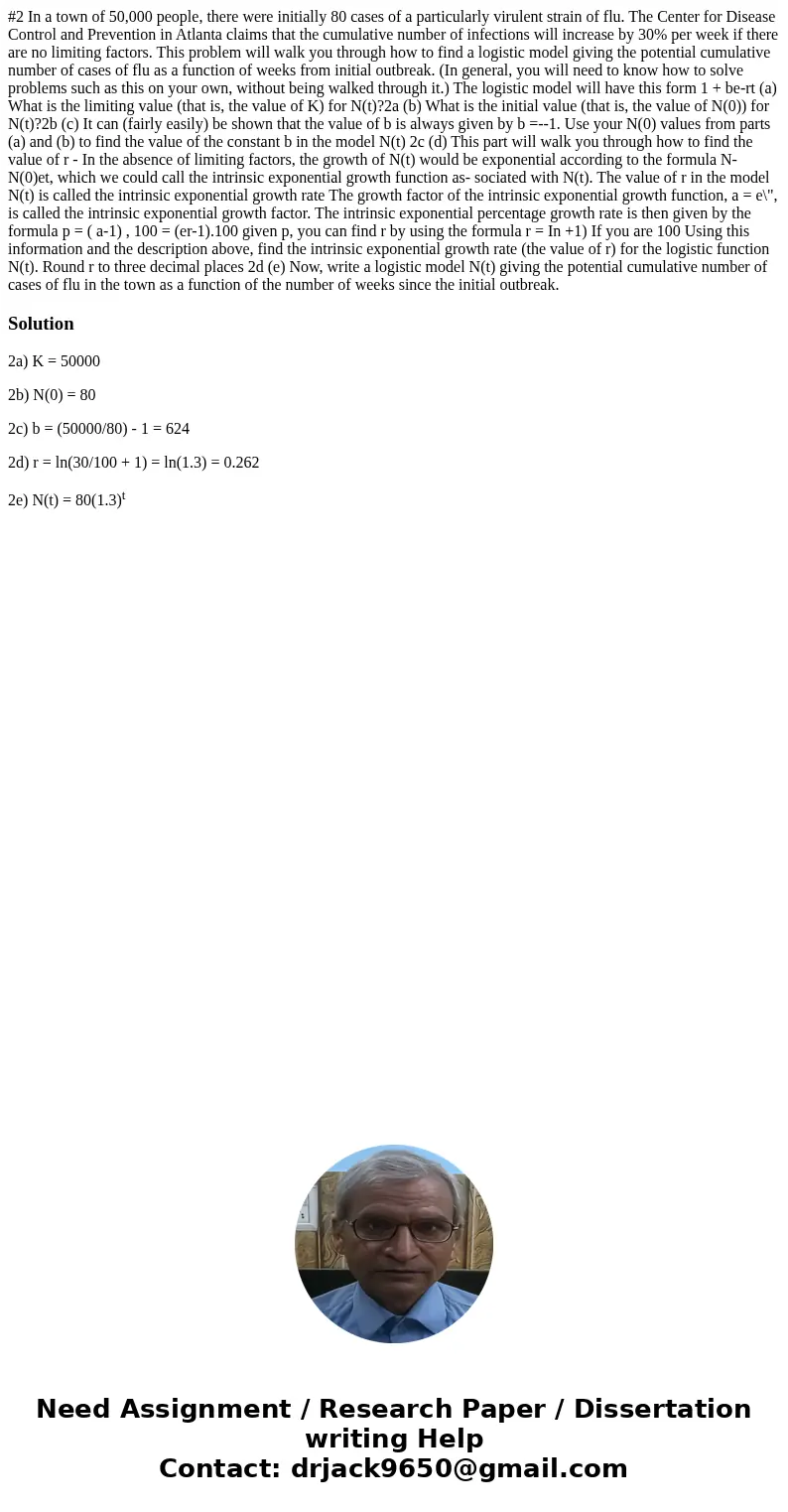2 In a town of 50000 people there were initially 80 cases of
#2 In a town of 50,000 people, there were initially 80 cases of a particularly virulent strain of flu. The Center for Disease Control and Prevention in Atlanta claims that the cumulative number of infections will increase by 30% per week if there are no limiting factors. This problem will walk you through how to find a logistic model giving the potential cumulative number of cases of flu as a function of weeks from initial outbreak. (In general, you will need to know how to solve problems such as this on your own, without being walked through it.) The logistic model will have this form 1 + be-rt (a) What is the limiting value (that is, the value of K) for N(t)?2a (b) What is the initial value (that is, the value of N(0)) for N(t)?2b (c) It can (fairly easily) be shown that the value of b is always given by b =--1. Use your N(0) values from parts (a) and (b) to find the value of the constant b in the model N(t) 2c (d) This part will walk you through how to find the value of r - In the absence of limiting factors, the growth of N(t) would be exponential according to the formula N-N(0)et, which we could call the intrinsic exponential growth function as- sociated with N(t). The value of r in the model N(t) is called the intrinsic exponential growth rate The growth factor of the intrinsic exponential growth function, a = e\", is called the intrinsic exponential growth factor. The intrinsic exponential percentage growth rate is then given by the formula p = ( a-1) , 100 = (er-1).100 given p, you can find r by using the formula r = In +1) If you are 100 Using this information and the description above, find the intrinsic exponential growth rate (the value of r) for the logistic function N(t). Round r to three decimal places 2d (e) Now, write a logistic model N(t) giving the potential cumulative number of cases of flu in the town as a function of the number of weeks since the initial outbreak. 
Solution
2a) K = 50000
2b) N(0) = 80
2c) b = (50000/80) - 1 = 624
2d) r = ln(30/100 + 1) = ln(1.3) = 0.262
2e) N(t) = 80(1.3)t

 Homework Sourse
Homework Sourse